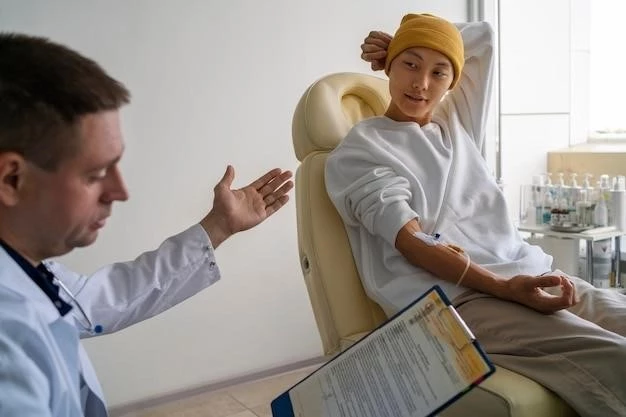Introduction to Trevor Disease
Dysplasia Epiphysealis Hemimelica‚ also known as Trevors Disease‚ is a rare congenital bone dysplasia characterized by cartilage overgrowth in the epiphyses․ It primarily affects children․
Overview of Dysplasia Epiphysealis Hemimelica
Dysplasia Epiphysealis Hemimelica‚ also known as Trevors Disease‚ is a rare congenital bone dysplasia characterized by asymmetric overgrowth of cartilage in the epiphyses of bones‚ primarily affecting children․ The condition‚ with an estimated incidence of 1 case per million‚ tends to occur more frequently in males than females․ Presentation typically includes limb deformity and may require surgical intervention for management․

Causes and Risk Factors
The exact cause of Dysplasia Epiphysealis Hemimelica‚ or Trevors Disease‚ remains unknown․ It is a rare congenital bone dysplasia characterized by abnormal cartilage growth in the epiphyses of bones․
Etiology of Trevor Disease
The etiology of Dysplasia Epiphysealis Hemimelica‚ or Trevor’s Disease‚ remains uncertain․ This rare congenital bone dysplasia is characterized by osteochondromas in the epiphyses of long bones‚ especially affecting children․

Signs and Symptoms
Dysplasia Epiphysealis Hemimelica‚ or Trevor Disease‚ commonly presents with limb deformities and asymmetric overgrowth of cartilage in the epiphyses‚ typically affecting children․
Clinical Presentation of Trevor Disease
Trevor Disease‚ or Dysplasia Epiphysealis Hemimelica‚ typically manifests as limb deformities due to the asymmetric overgrowth of cartilage in the epiphyses of bones‚ primarily in children․ The condition is characterized by benign intra-articular masses confined to bone epiphyses․
Diagnosis and Differential Diagnosis
Diagnosis of Dysplasia Epiphysealis Hemimelica‚ or Trevor Disease‚ is typically made through radiographic imaging of the affected joint․ Differential diagnosis may involve ruling out other bone dysplasias with similar presentations․
Methods for Diagnosing Trevor Disease
The diagnosis of Dysplasia Epiphysealis Hemimelica‚ or Trevor Disease‚ typically involves radiographic imaging studies of the affected joint to identify the abnormal cartilage overgrowth in the epiphyses․ Additional imaging modalities such as MRI or CT scans may be utilized to further assess the extent of the condition․
Treatment Approaches
Management of Dysplasia Epiphysealis Hemimelica‚ or Trevor Disease‚ often involves surgical excision of the abnormal cartilage overgrowth in the affected epiphyses․ Non-surgical options may include supportive joint care with short-term splinting․
Surgical and Non-Surgical Management of Trevor Disease
Treatment of Dysplasia Epiphysealis Hemimelica‚ or Trevor Disease‚ often involves surgical excision of the abnormal cartilage overgrowth in the affected epiphyses․ Non-surgical approaches may include short-term splinting for joint support‚ especially in cases where surgical intervention is not warranted․
Prognosis and Complications
The long-term outlook for individuals with Trevor Disease‚ or Dysplasia Epiphysealis Hemimelica‚ depends on the extent of cartilage overgrowth and the management approach․ Complications may include joint deformities and functional limitations․
Long-Term Outlook for Individuals with Trevor Disease
The long-term prognosis for individuals with Dysplasia Epiphysealis Hemimelica‚ or Trevor Disease‚ varies depending on the severity of cartilage overgrowth and the effectiveness of treatment․ Complications may include joint deformities and functional limitations‚ which may impact the individual’s quality of life․
Current Research and Case Studies
Research on Dysplasia Epiphysealis Hemimelica‚ commonly known as Trevor Disease‚ focuses on understanding the pathobiology and improving treatment outcomes․ Case studies provide valuable insights into the diagnosis and management of this rare skeletal developmental disorder․
Literature Review on Trevor Disease
Research literature on Dysplasia Epiphysealis Hemimelica‚ commonly known as Trevor Disease‚ provides insights into the pathogenesis‚ clinical characteristics‚ and treatment outcomes of this rare skeletal developmental disorder․ Case studies and scholarly articles contribute to the understanding of the condition’s diagnostic challenges and best management practices․
Awareness and Education
Raising awareness about Trevor Disease‚ or Dysplasia Epiphysealis Hemimelica‚ is crucial to enhance understanding of this rare congenital bone dysplasia․ Education on diagnostic challenges and treatment options is essential for healthcare professionals and the general public․
Importance of Raising Awareness about Trevor Disease
Raising awareness about Dysplasia Epiphysealis Hemimelica‚ known as Trevor Disease‚ is essential to facilitate early diagnosis and appropriate management․ Increased awareness among healthcare providers and the public can lead to improved outcomes for individuals affected by this rare congenital bone dysplasia․
